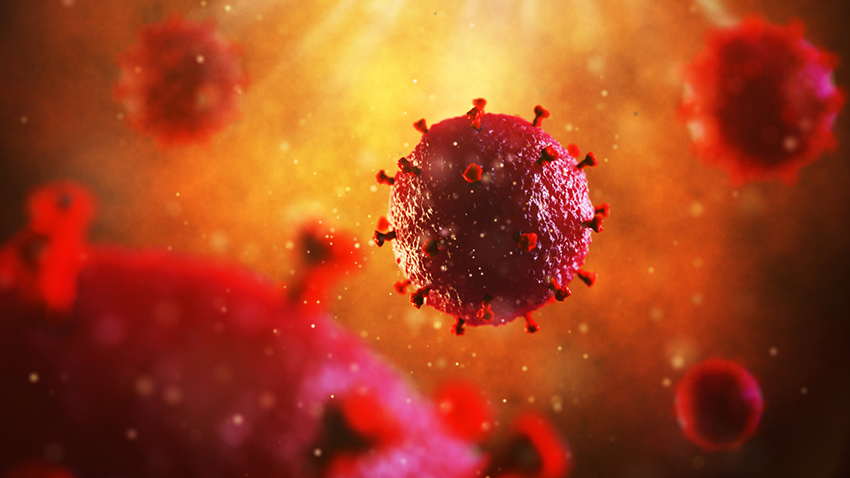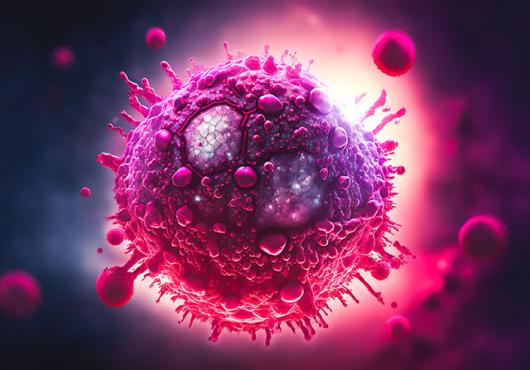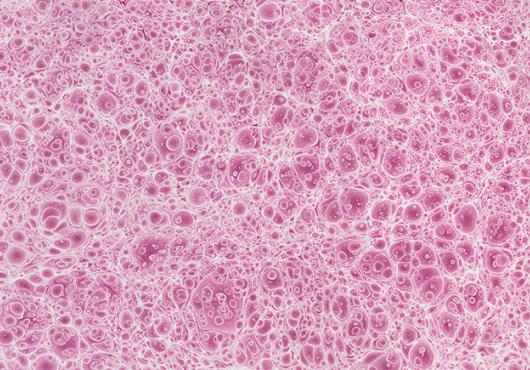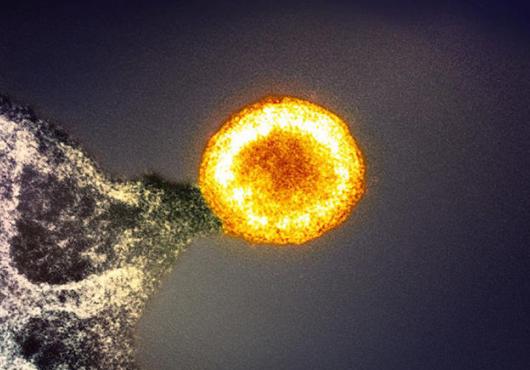
Harvard Medical School investigators based at the Ragon Institute of MGH, MIT and Harvard have used a novel approach to identify specific amino acids in the protein structure of HIV that appear critical to the ability of the virus to function and replicate.
They also have found that the immune systems of individuals naturally able to control HIV infection target these amino acids with pathogen-killing CD8 T cells, an ability seen even in controllers who do not carry versions of the HLA-B protein previously associated with HIV control.
The report appears in the May 3 issue of Science and could guide the development of broadly protective vaccines to prevent and suppress HIV infection.
“Our findings provide a putative mechanism for a major component of successful immune control of HIV and help decouple HIV control from specific versions of HLA genes, which makes our finding broadly applicable to the global population,” said co-lead author Gaurav Gaiha, HMS instructor in medicine at Massachusetts General Hospital and a fellow at the Ragon Institute.
“We believe these findings could have major implications for the development of T-cell-based vaccines for HIV and for other pathogens as well,” he said.
It has been known for nearly three decades that a few individuals infected with HIV are naturally able to suppress the virus with their immune systems, and a highly functional CD8 T cell response has been suggested as one probable mechanism.
A 2010 Ragon Institute study found that specific variants of the HLA-B protein—which carries viral peptides to the surface of infected cells and presents them to the immune system, marking the cell for destruction by CD8 T cells—were common in HIV controllers but not in individuals with progressive HIV infection.
Five amino acids in the most common control-associated variant, HLA-B57, were found in the lining of the binding pocket, the portion of the protein that grabs and displays viral peptides. But subsequent research identified a few controllers who do not carry HLA-B57, indicating that other mechanisms could be involved.
For the current study, the team used structure-based network analysis—a novel approach to examine the complex, structural bonds within and among viral proteins—to identify residues (specific amino acids within a peptide) crucial to viral function.
“All proteins fold into their ultimate, three-dimensional structure through a series of bonds between amino acids; so we can mathematically represent proteins as a network of connections between amino acids,” explained co-lead author Elizabeth Rossin, HMS instructor in ophthalmology at Massachusetts Eye and Ear and a visiting scientist at the Broad Institute of MIT and Harvard.
“This allows us to use an approach called network theory, a well-defined area of mathematics, to ask a large variety of questions about the structure of the network as a whole, as well as its individual parts,” she said.
Network analysis
Applying network analysis to information obtained from the Protein Data Bank on the structure of 12 of the 15 proteins that make up HIV, the investigators were able to calculate network scores for each amino acid, reflecting the number and relative importance of bonds with other amino acids in the protein.
The more highly networked an amino acid was, the less likely it was to be mutated in thousands of viral sequences taken from patients, implying that highly networked residues were important to viral function.
To test that implication, the investigators engineered mutations into amino acids with high and low network scores and found that mutating highly networked residues substantially impaired the ability of HIV to infect cells and replicate.
In contrast, mutating amino acids with low network scores had little or no impact on viral infectivity. The Gag p24 protein, which is important for the formation of the virus’s protein shell, had the highest frequency of networked amino acids. This supports previous studies finding that it was more sensitive than other HIV proteins to the effects of mutation and that T-cell responses targeting Gag p24 were associated with lower viral levels.
The team also produced network scores for protective and risk-associated HLA variants and found that protective forms like HLA-B57 commonly presented viral peptides that were highly networked, while risk-increasing versions were more likely to present poorly networked peptides.
This finding suggests that HLA-B57’s greater likelihood of presenting highly networked viral peptides to the immune system could induce a CD8 T cell response targeting sequences more critical to viral function.
To investigate the relationship between these findings and natural HIV control, the team compared the CD8 T cell responses of a group of controllers with those of individuals with intermediate viral loads and those in whom infection was progressive, as indicated by higher viral loads.
Not only was the proliferation of CD8 T cells highest in controllers, their T cell response also was directed against highly networked amino acids, which were weakly targeted by non-controllers. CD8 T cell targeting of highly networked peptides was also seen in controllers who do not have protective forms of HLA, indicating that the ability to mount a T cell defense against those viral peptides may be more important than an individual’s inherited HLA variants.
“This study implies that HIV controllers are able to keep the virus in check with highly functional CD8 T cell responses directed against critical peptides, which cannot be mutated without costly effects on the virus’s ability to replicate, allowing persistent killing of infected cells by CD8 T cells,” Gaiha said. “We’ve already begun working on development of a vaccine based on these findings, incorporating highly networked peptides presented by versions of HLA that are common throughout the global population.”
“In 1994 we first encountered a patient who was able to naturally control HIV with his own immune system, and now we finally understand how he and others like him are able to do it, ” said Bruce Walker, Ragon Institute director and senior author of the Science paper.
Walker is the Phillip T. and Susan M. Ragon Professor of Medicine at HMS and a Howard Hughes Medical Institute investigator.
Additional co-authors of the Science paper are Jonathan Urbach, Christian Landeros, David Collins, Chioma Nwonu, Itai Muzhingi, Melis Anahtar, Olivia Waring, Alicja Piechocka-Trocha, Michael Waring, Daniel Worrall, Musie Ghebremichael, Ruchi Newman, Karen Power, Todd Allen and James Chodosh.
Support for the study includes grants from the Howard Hughes Medical Institute, the National Institute of Allergy and Infectious Disease Center for HIV/AIDS Vaccine Immunology and Immunogen Discovery, the Ragon Institute, the National Institutes of Health, Mark and Lisa Schwartz and the Harvard University Center for AIDS research.
Adapted from a Mass General news release.





